John L. Dengler was recently inducted into the Missouri Photojournalism Hall of Fame. Here are his remarks (and slides shown) in which he thanked those who played an important role in his career as a photojournalist, graphics editor, design editor, and creative director. The ceremony took place at the State Historical Society of Missouri Center for Missouri Studies located in Columbia, Mo. on October 21, 2021. Rita Reed, former Minneapolis Star-Tribune photojournalist and professor emeritus at the Missouri School of Journalism introduced Dengler.
Thank you, Rita. Your introduction truly humbles me. Only my grandmother could top you in promoting my accomplishments.
I always felt sorry for the waitresses at the rural diner where I took my grandmother for lunch. She’d keep the waitress’s hand pressed to the tabletop to keep her at the table until my grandmother finished her exaggerated spiel of what I did at the newspaper. It would always end up with a wink from the waitress to me, indicating that waitress knew that I wasn’t, as what my grandmother was describing, the publisher of the newspaper.
I want to begin by first thanking the subjects I have met during my career, as they are the ones who truly have made my standing here today possible. I’ve always been amazed how people allow photographers to share their lives and stories with others through our lenses.
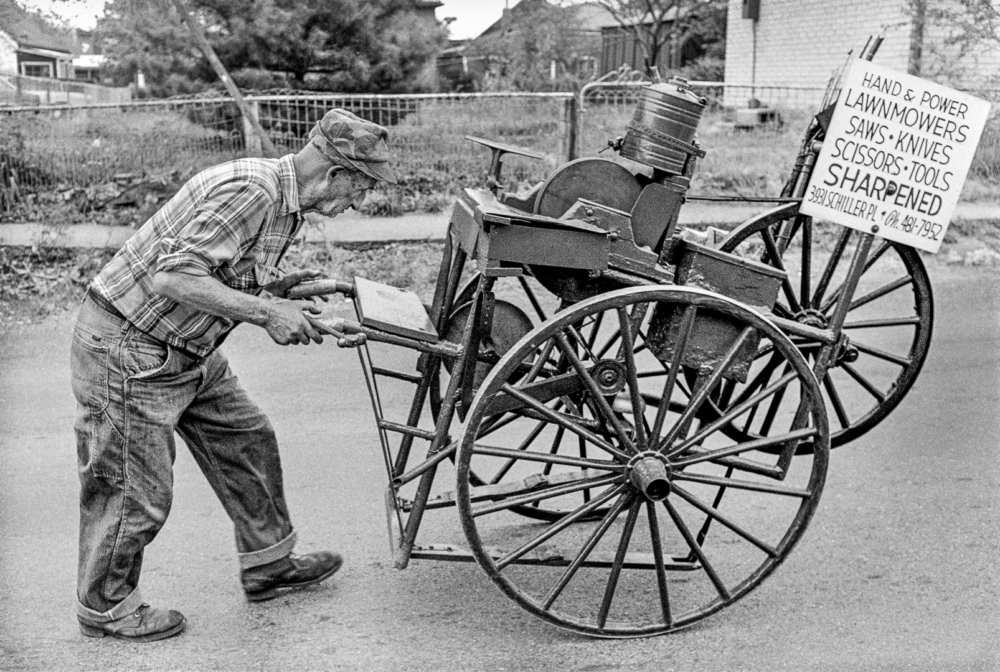
Here is Tony Gagliarducci, the last of the traveling tool grinders in St. Louis, as he pushes his 300-pound pushcart at age 77. He claimed to walk up to 20 miles a day, six days a week.
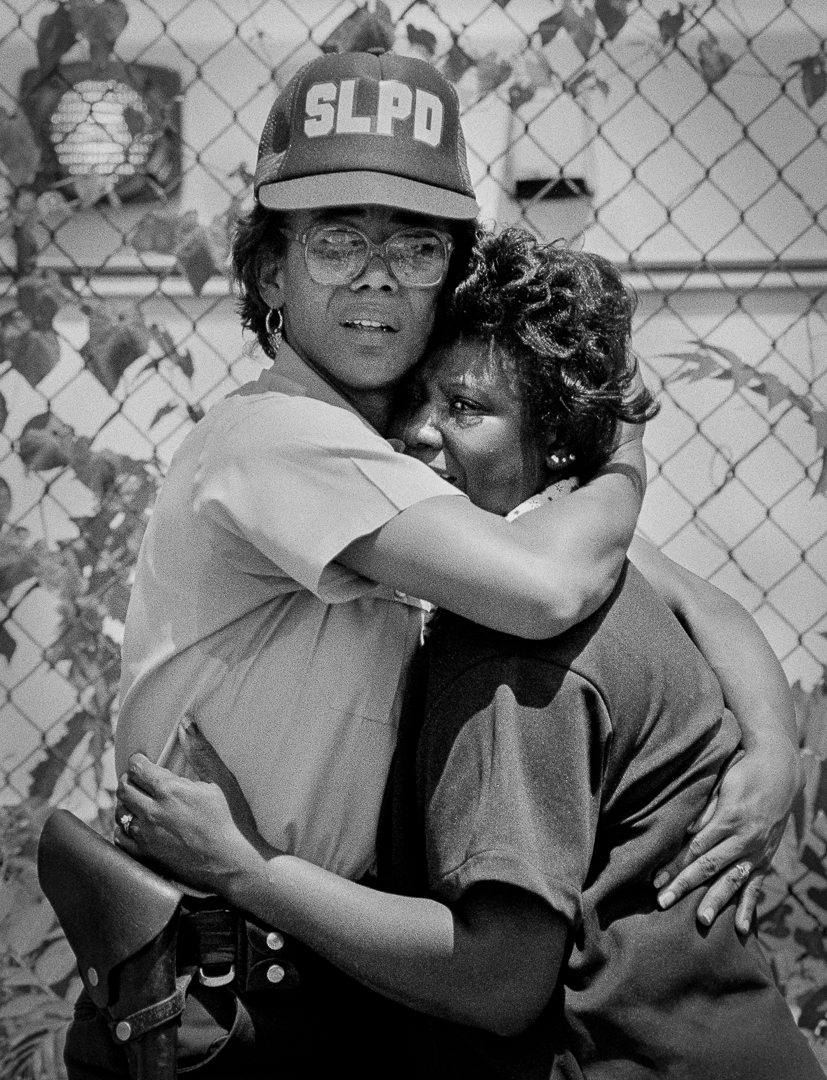
Sometimes subjects had no choice to enter my lens like this woman being comforted by a police officer after learning that her husband, a demolition worker, was crushed to death in a building collapse. Ironically, the day before, the construction worker had told friends that he feared for his safety on the job.
I hope the folks I have encountered found that I captured their good and bad times with respect, compassion and truth.
I can’t imagine a more enriching career or life experience than what I have had — and then to be able to share those experiences with others is an honor. Those experiences have taken me to a hidden cave in Missouri so newly discovered that fewer than a half dozen people have been in, to high in a Costa Rican rainforest canopy to document the work of researchers from the Missouri Botanical Garden.
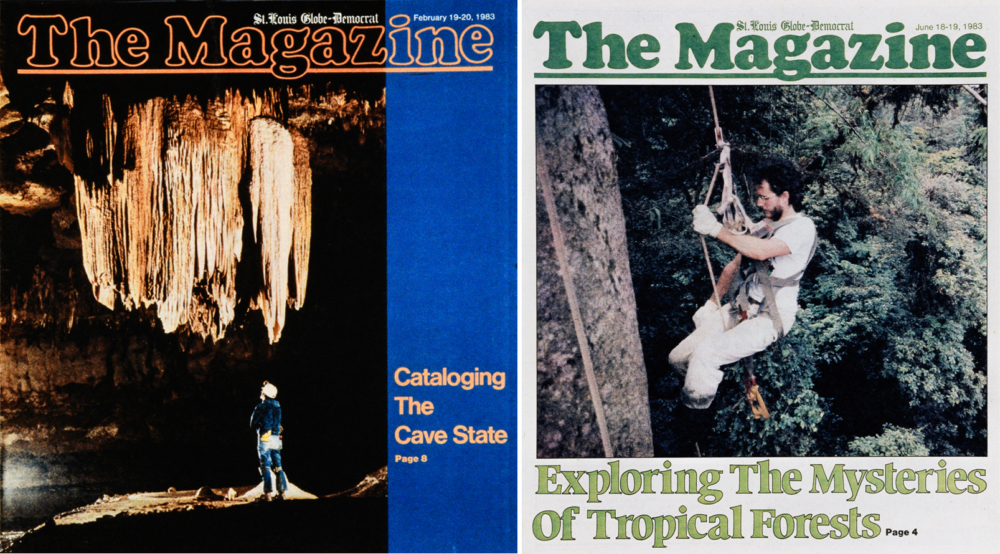
I also want to thank those who helped shape my early professional career, starting with my high school journalism teachers Larry Gross and Mike Killenberg. Killenberg took a chance on me as an incoming freshman and gave me special permission to join the newspaper staff, something previously only reserved for seniors.
In journalism school, Angus McDougall provided the inspiration to tell impactful visual stories through thoughtful photography, photo editing, and design. I could go on for an hour talking about his professional impact and even more hours talking about the friendship that included his wife Betty years after I left school.
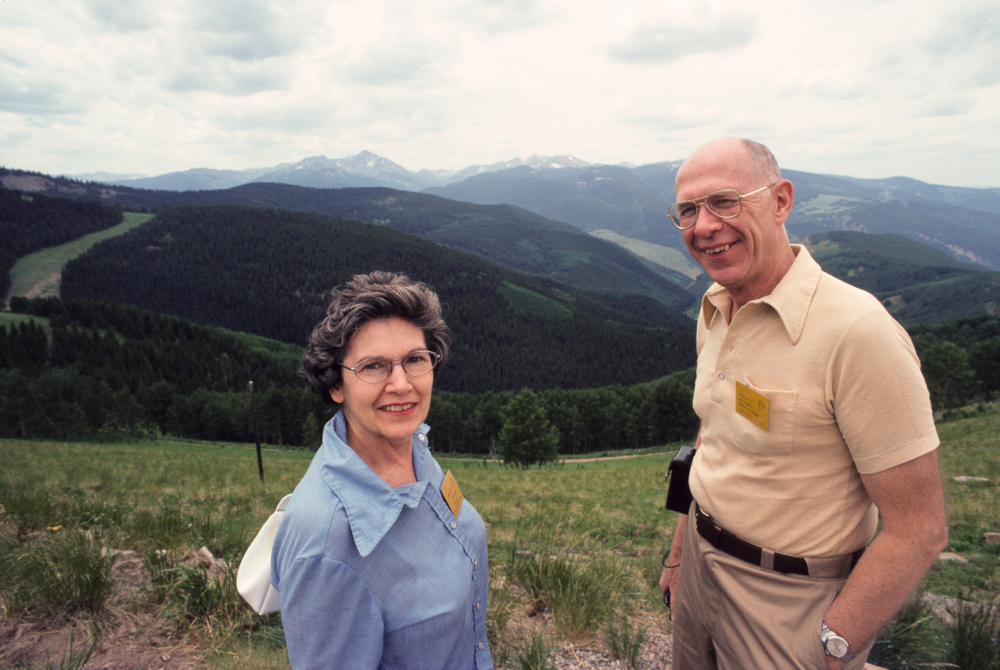
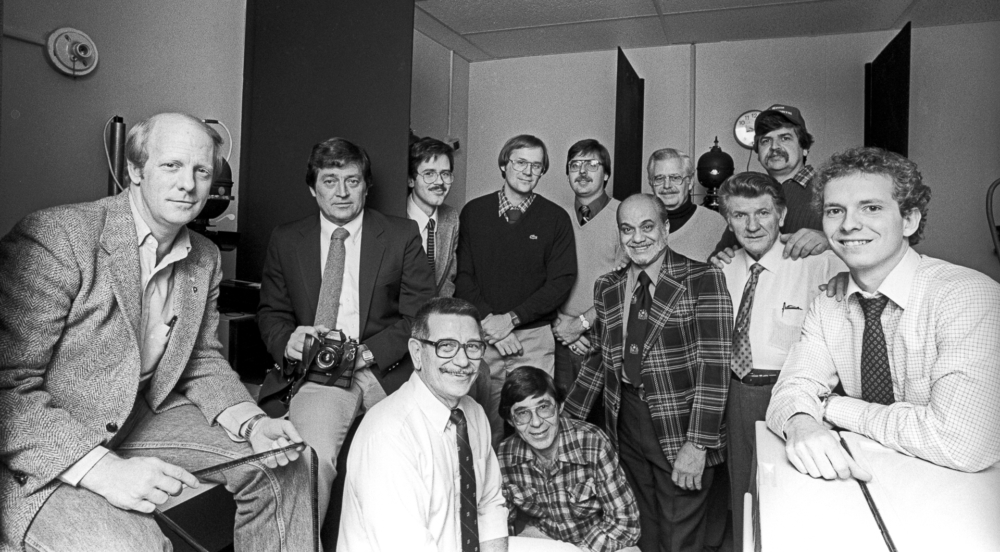
I also want to thank my fellow photographers at the Globe-Democrat and even our competition, the Post-Dispatch photographers, for either knowingly pushing me to strive to be better with advice or unknowingly through friendly competition. Working in a two-newspaper town was a blast.
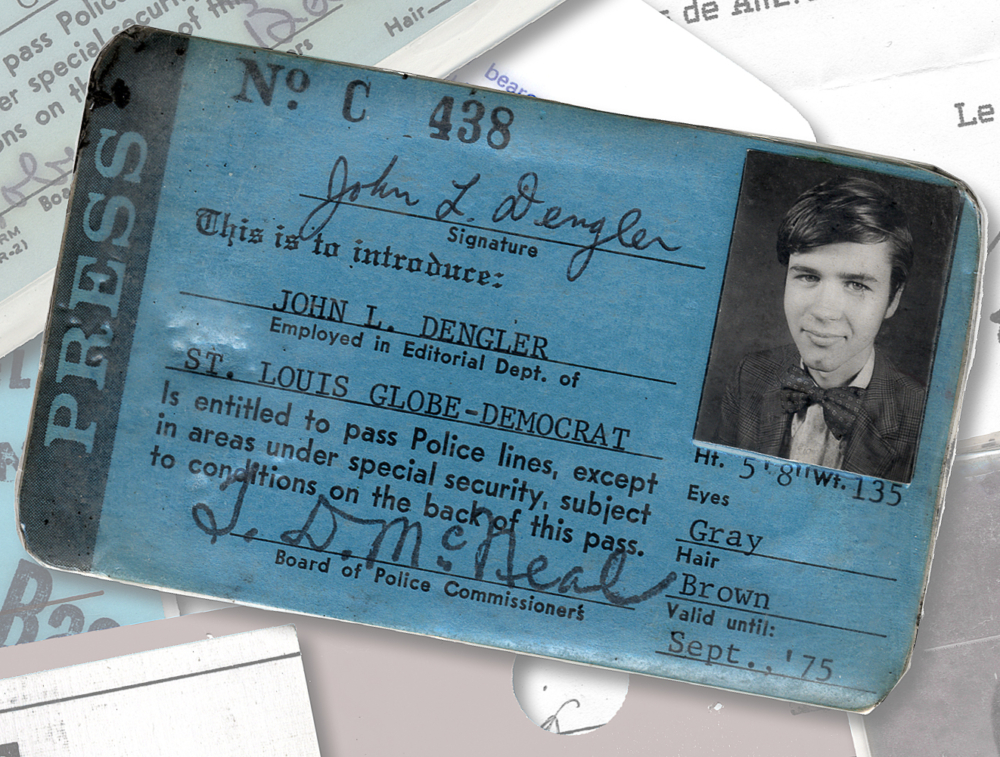
While I had already worked at the Globe for three years part-time while in college (thank you, Greyhound Bus Lines), after graduation I became the features page designer due to a lack of openings in the photo department. While I saw this as a setback in my photography career, it was critical to my future direction. During the one year in this position, I polished my design and typography skills while at the same time receiving deep institutional knowledge of the production of the newspaper.
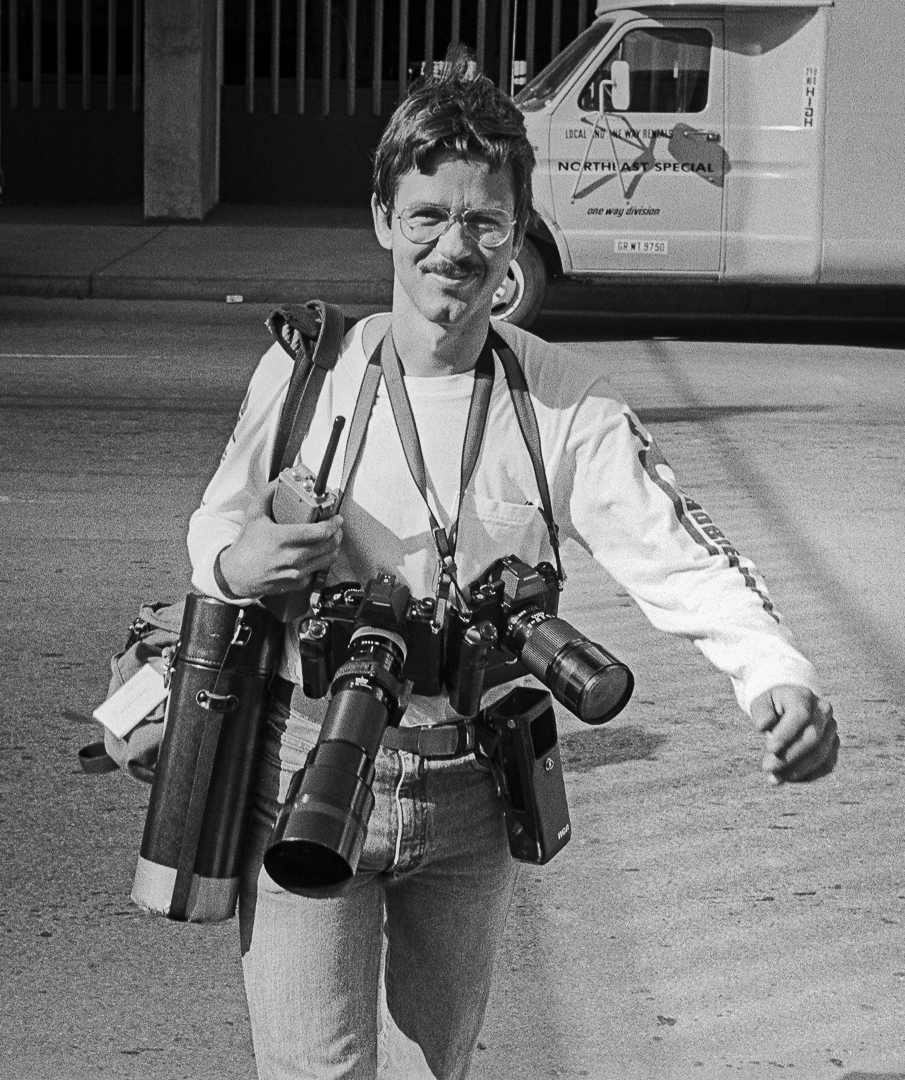
Technically, once I went back to being a staff photographer, I was no longer supposed to do page design since the paper’s employees were members of the Newspaper Guild. Union rules meant everyone had to keep within their very specific job description.
But that didn’t stop me from designing my own photo stories. Amazingly, everyone knew what I was doing with the picture stories I was producing, but everyone looked the other way. To those folks, I owe a REALLY BIG thanks. These photo pages were simple slice of life stories frequently focused on rural life or environmental topics. Looking back, I’m actually surprised by the number of stories produced.
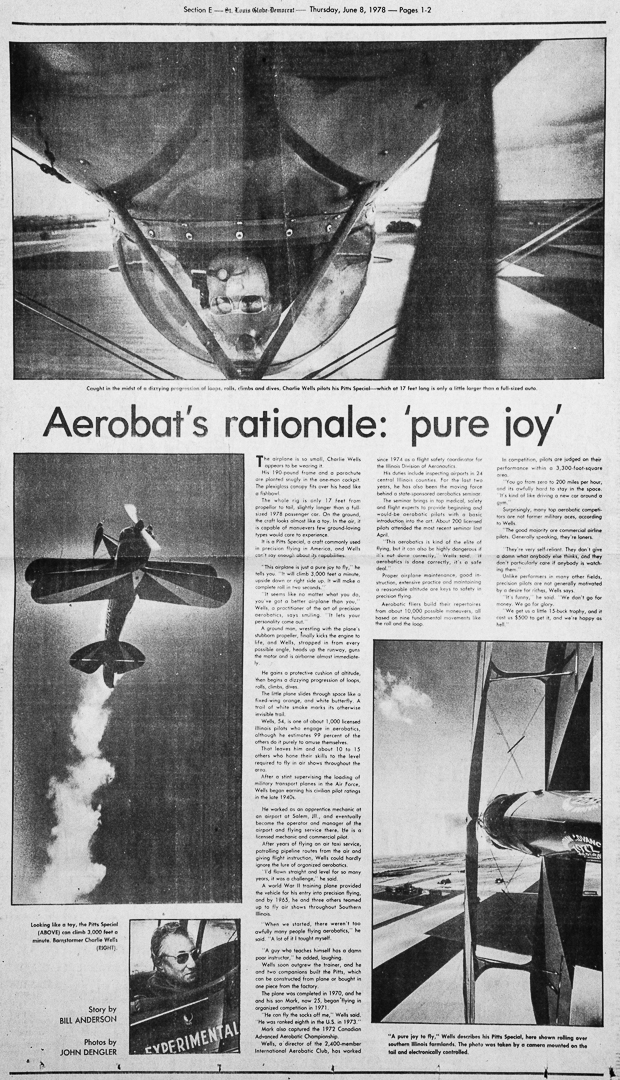
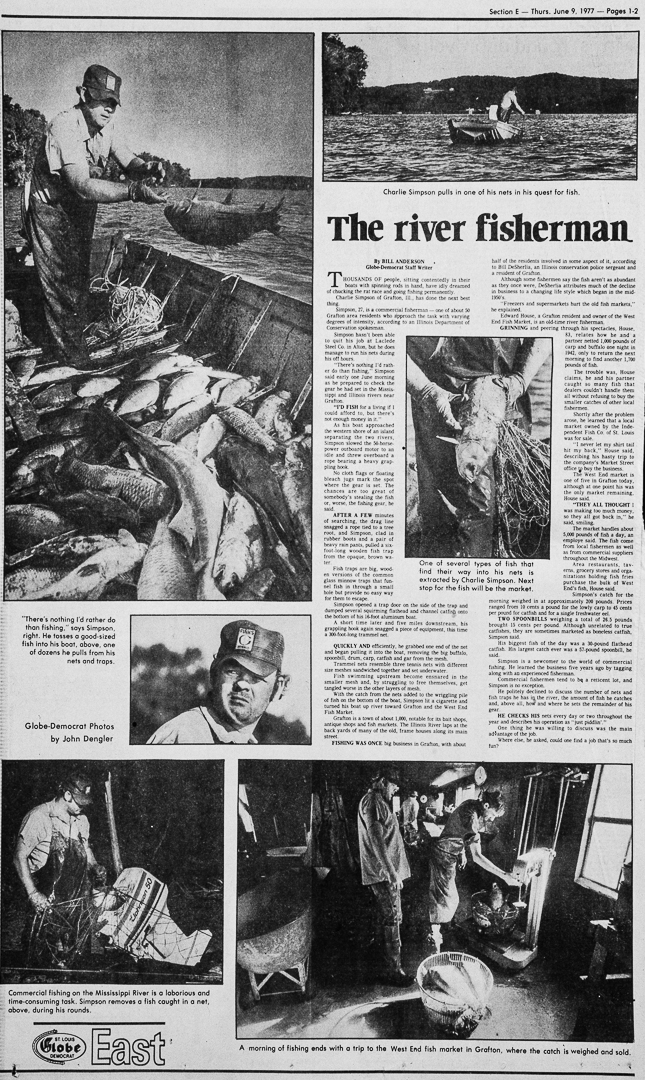
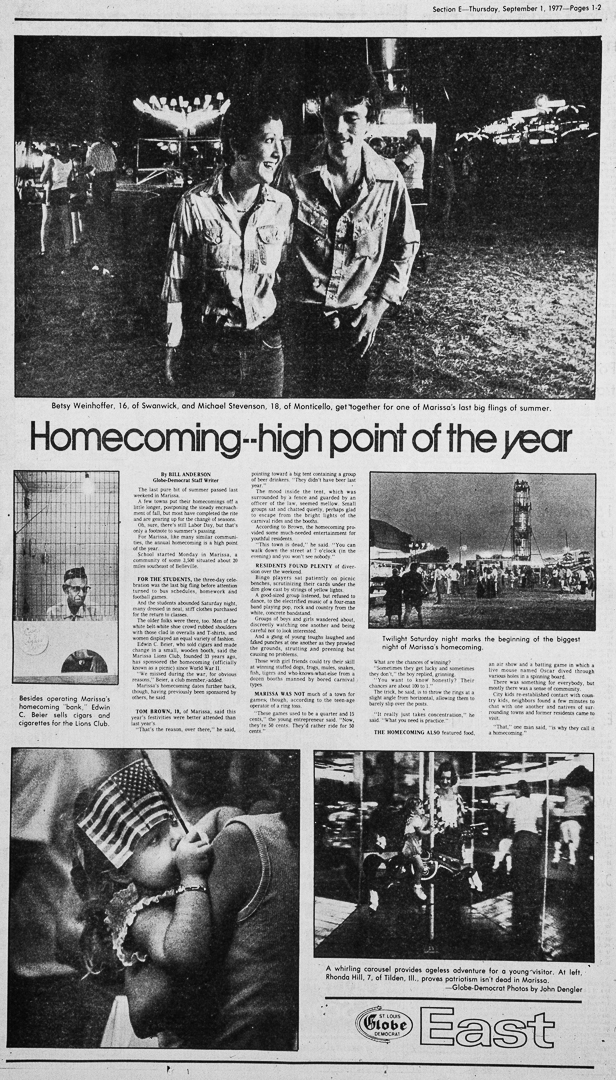
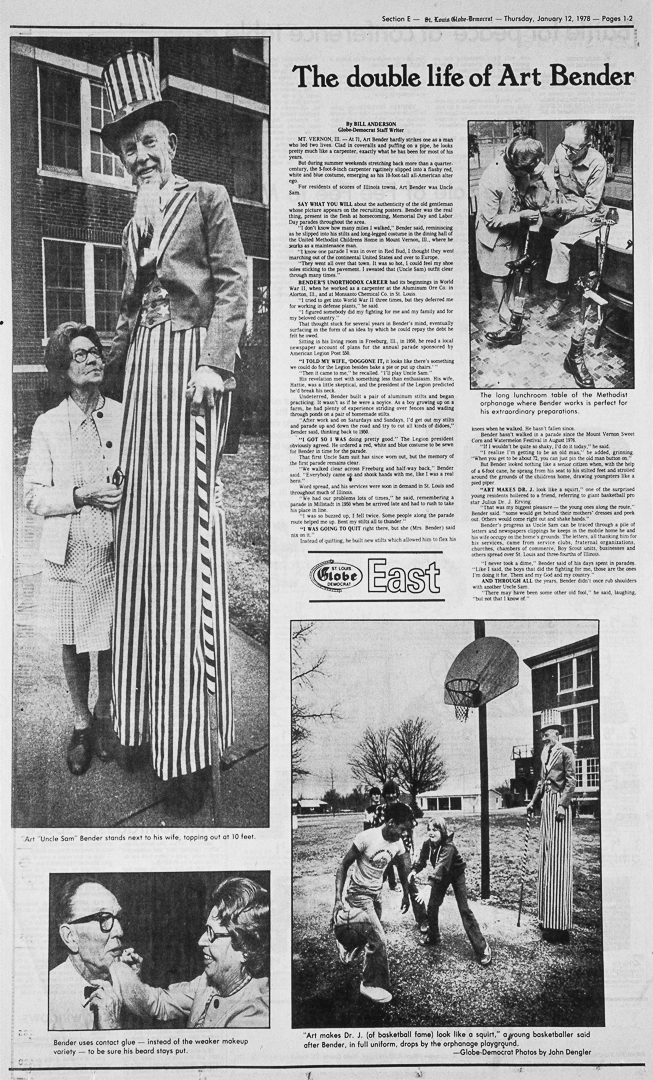
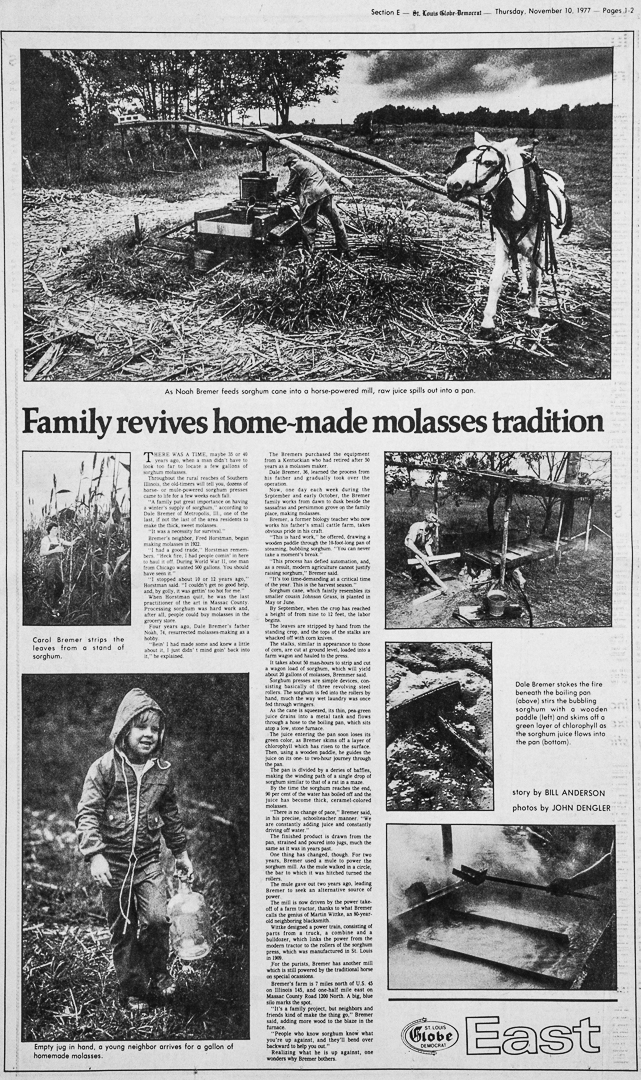
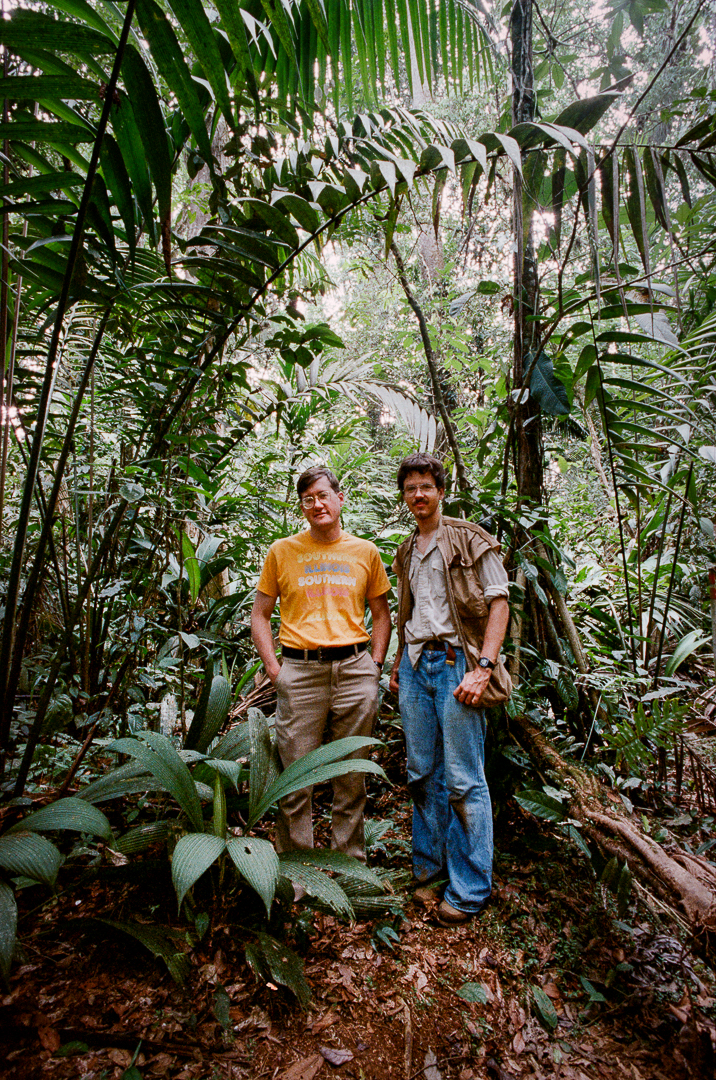
Globe-Democrat writer Bill Anderson and I often teamed up for these stories. We made a great team and respected each other’s role in the storytelling process. Thank you, Bill, we sure had some great times exploring the back roads.
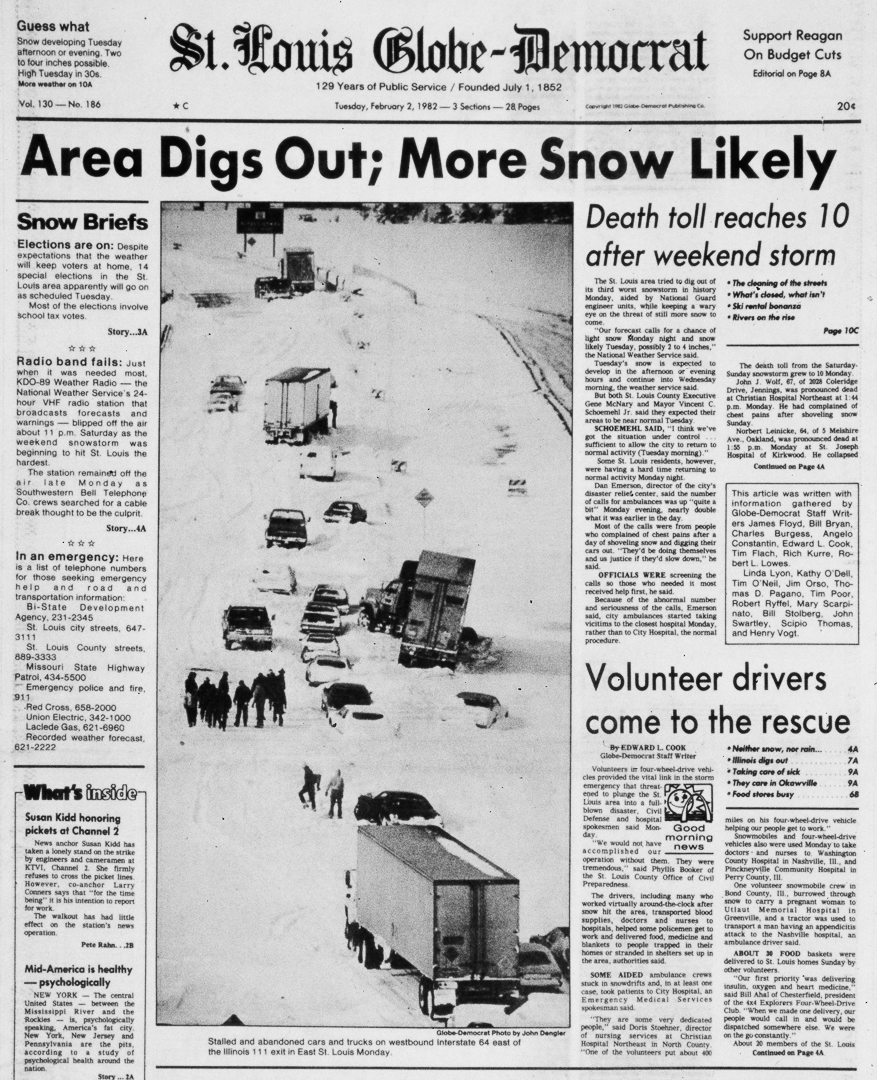
Thank you to the front page editors, who indulged me when I turned in non-standard format photos like this photo of the aftermath of a snowstorm. Narrow-cropped photos like this one on deadline would mean that the front page editor would have to totally redo the front page design. However, because I would often print the image to an actual column size it would usually be an easy sell when I dropped the photo on their life-size dummy sheet.
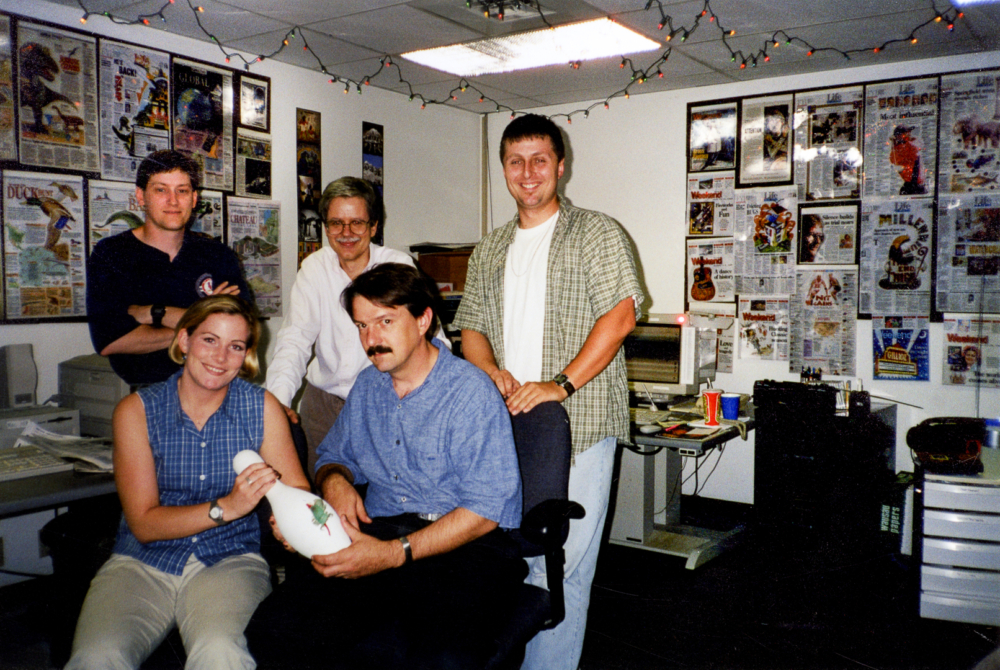
To the team of graphic artists at the Springfield News-Leader, thank you for making me look better than I am.
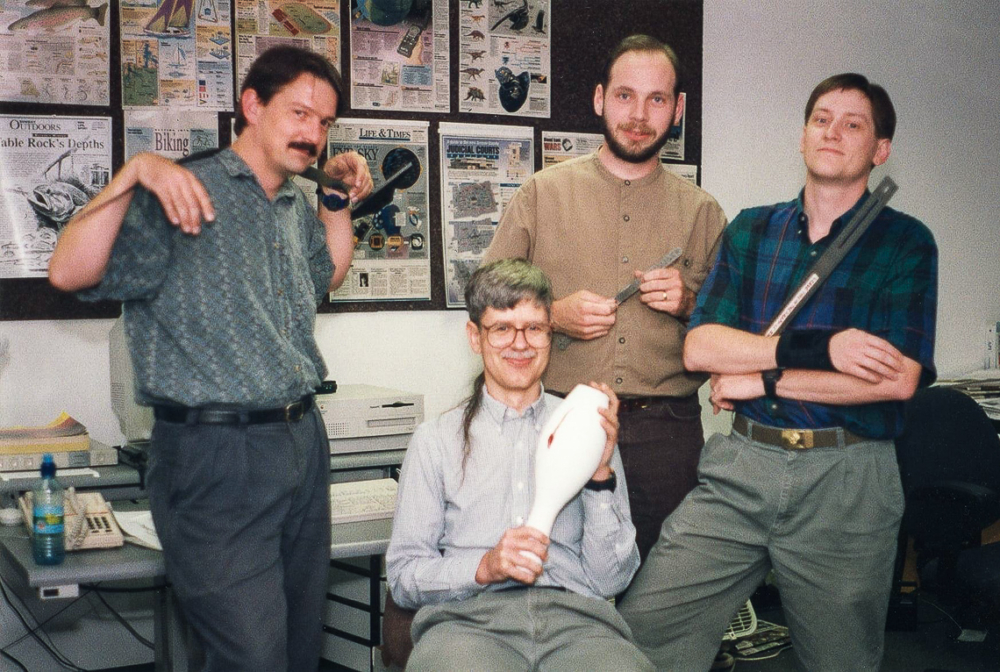
Why I was hired to head of a department of artists when I barely can draw a stick figure, alludes me. But I met the challenge, drawing on my photojournalism and design background with the belief that the department could become equals with the reporting staff by being proactive with story ideas, and doing their own reporting. A good day for me was when I was the only one in the department. That meant that everyone else was out in the field reporting. I’m crazy proud of the work that the graphics staff did.
When I arrived at the News-Leader, the Apple Macintosh computer had only been out for a year or two, illustration software was crude and output was limited. That didn’t stop us though. Instead, Eric Craven used a sketchbook style for this look at a prairie.
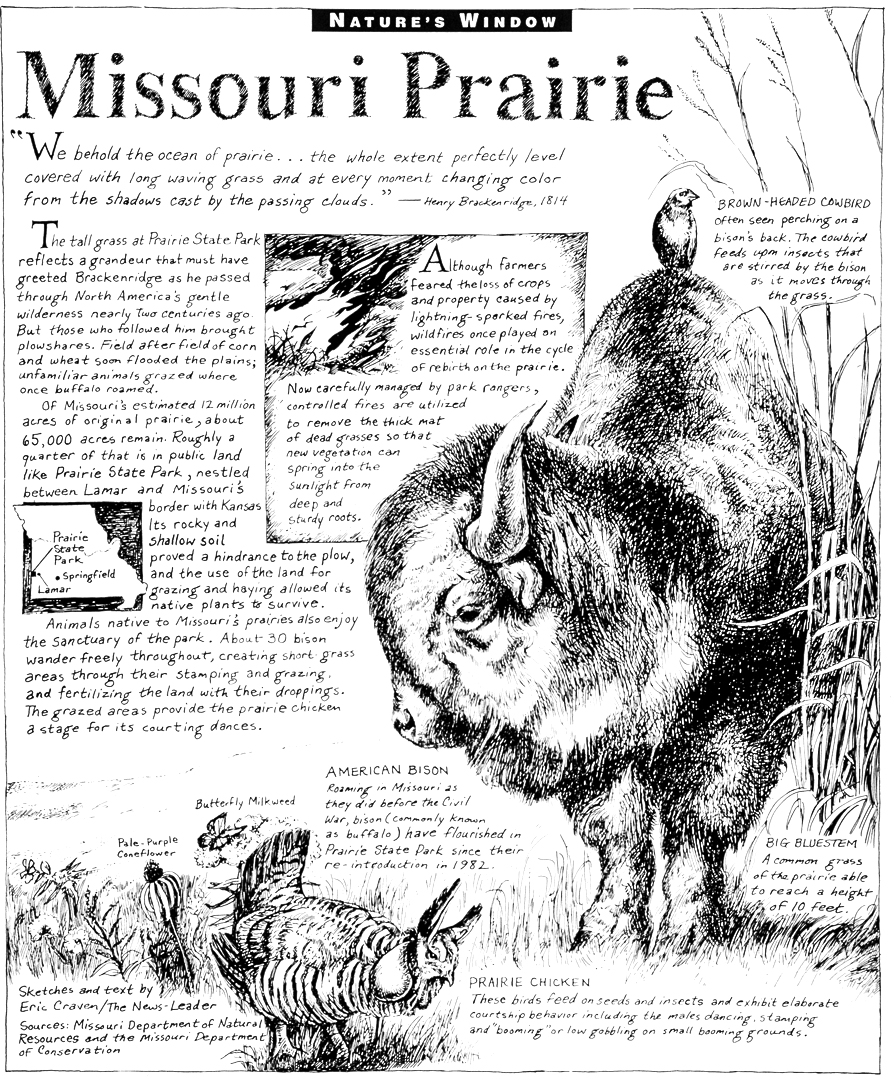
then technology began to improve as seen in this graphic on trout fishing by Jeff Harper,
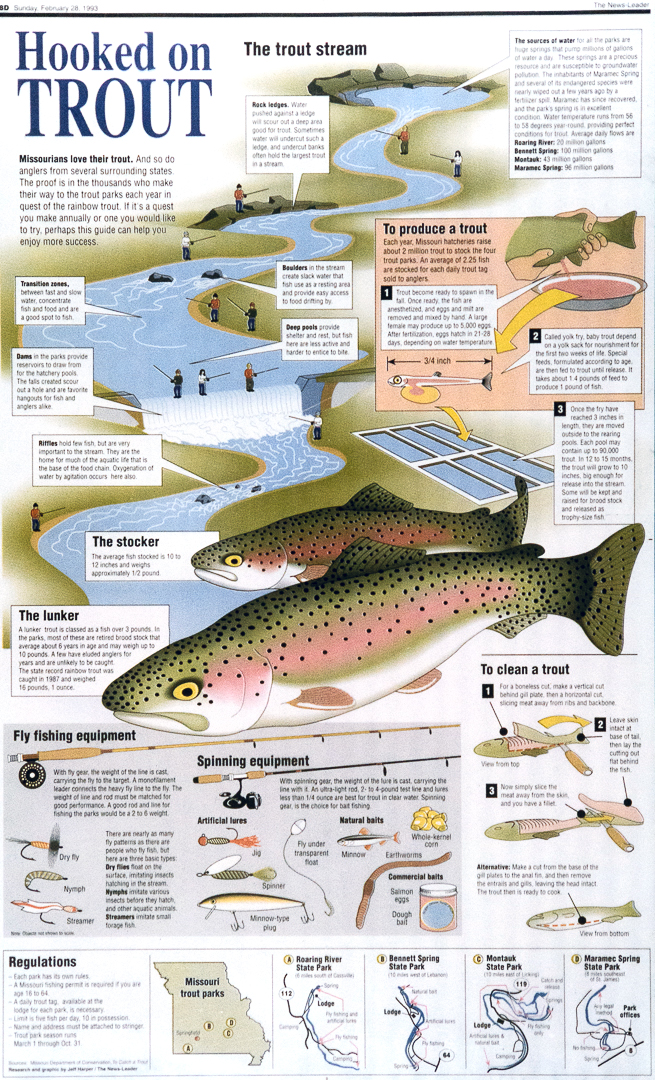
a two-page graphic look at everything you needed to know about the new Springfield Cardinals stadium by Brian McGill,

and a look back at how a commercial jet and a small private jet collided by Jeff Harper and Mike O’Brien.

We used graphics as a way to make data more understandable, as seen in this graphic by Brian McGill on corporal punishment in Missouri,
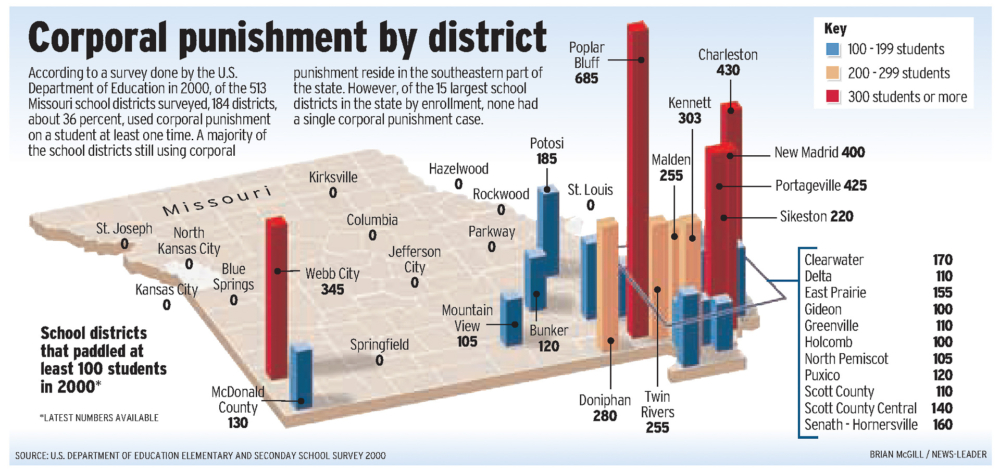
and would often incorporate photos with the graphic as in this infographic by Jeff Harper, photo by Jess Heugel, on how highway guard cables work.
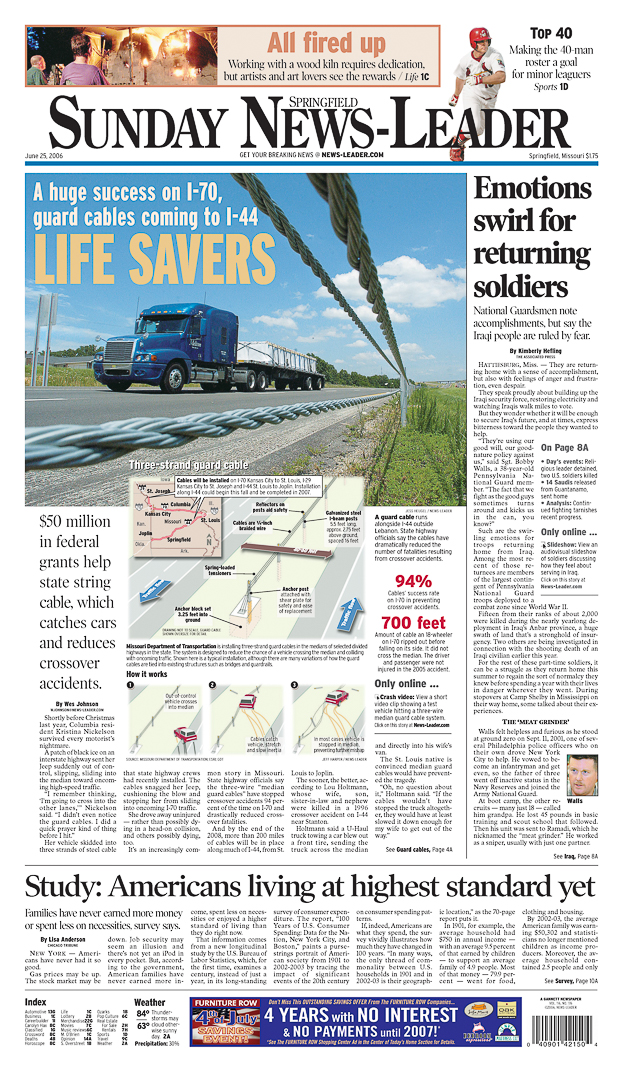
Infographics do have their limitation though. You will never see one that can make a person cry as a powerful photograph can.

To News-Leader graphic artist Jeff Harper I owe a special shout out for standing in for me at news meetings during the times I tackled special projects like the 2002 total redesign of the paper for the new press or my design work on Ozarks Signature magazine that showcased the photography of the Missouri Photojournalism Hall of Fame recipient, Bob Linder.
Our small magazine team thought like a big-time, high-quality magazine emphasizing high-end photography, as seen in a few of the spreads from a story on a local airplane collector with some of the 22 airplanes he owns. Our approach to photography was to keep it in the starring role.
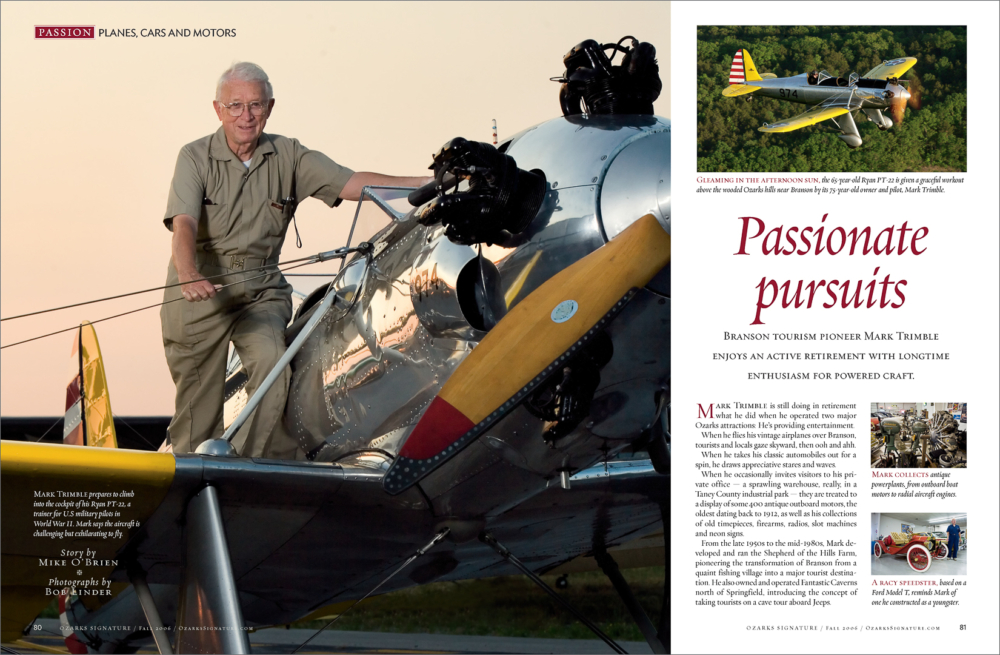
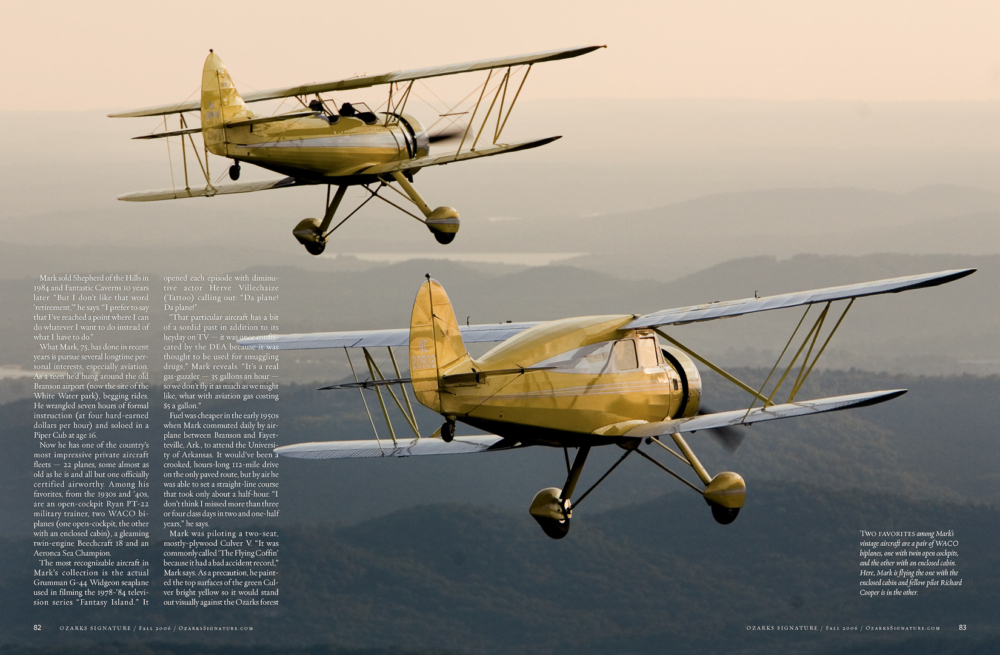
Then, there was the story for which Bob traveled to Ecuador to accompany a local lawyer, turned chocolate-maker, as he searched for cacao bean sources for his new business. Our approach to photography was to keep it in the starring role.
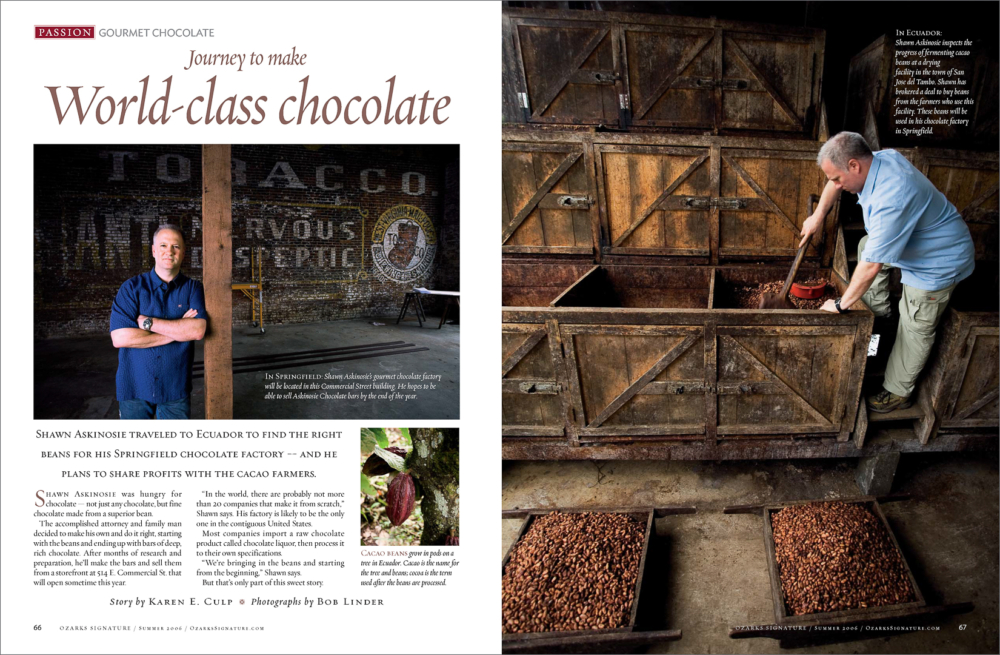
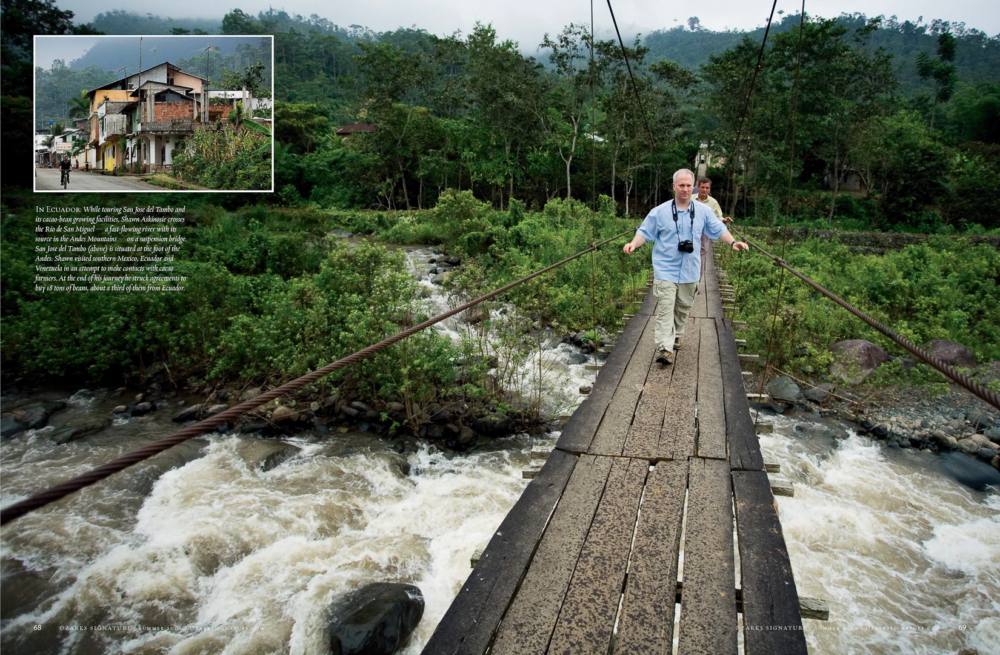

As Rita described, I have since left the newspaper and returned to my photojournalism roots but this time focusing on conservation and the environment as an independent photographer. It has been a learning process since I barely knew anything about licensing contracts, copyright, or how to work with a digital camera. While that might sound scary, I found it to be an exciting and refreshing way to reboot. It felt like I was just out of college.
These pursuits have taken me to work in the prairies of Kansas to the wild places of Alaska.
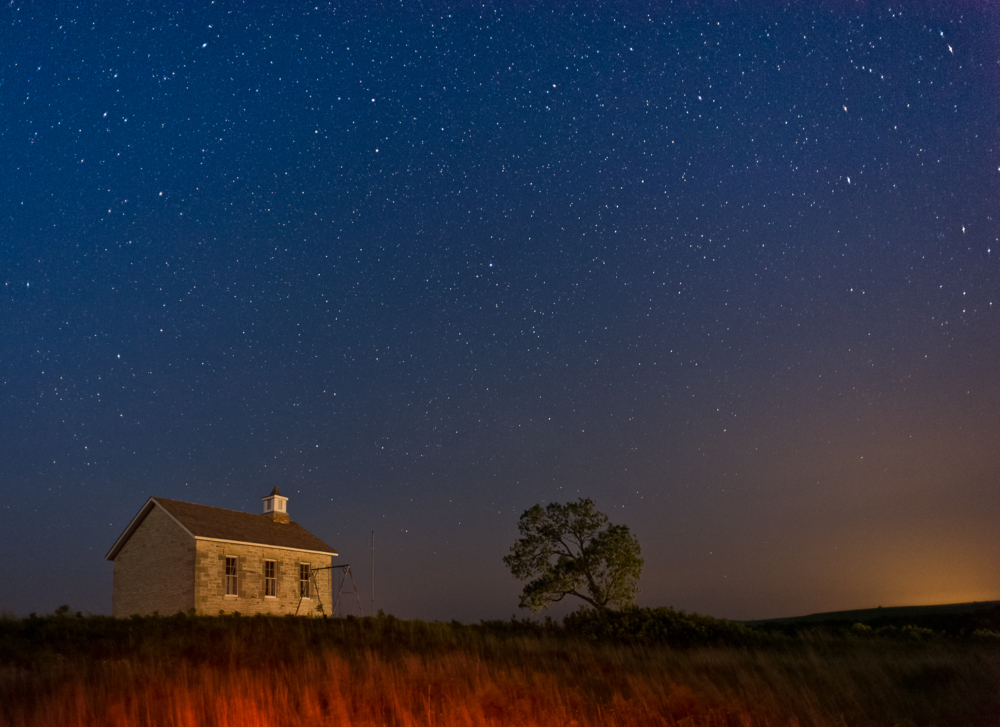
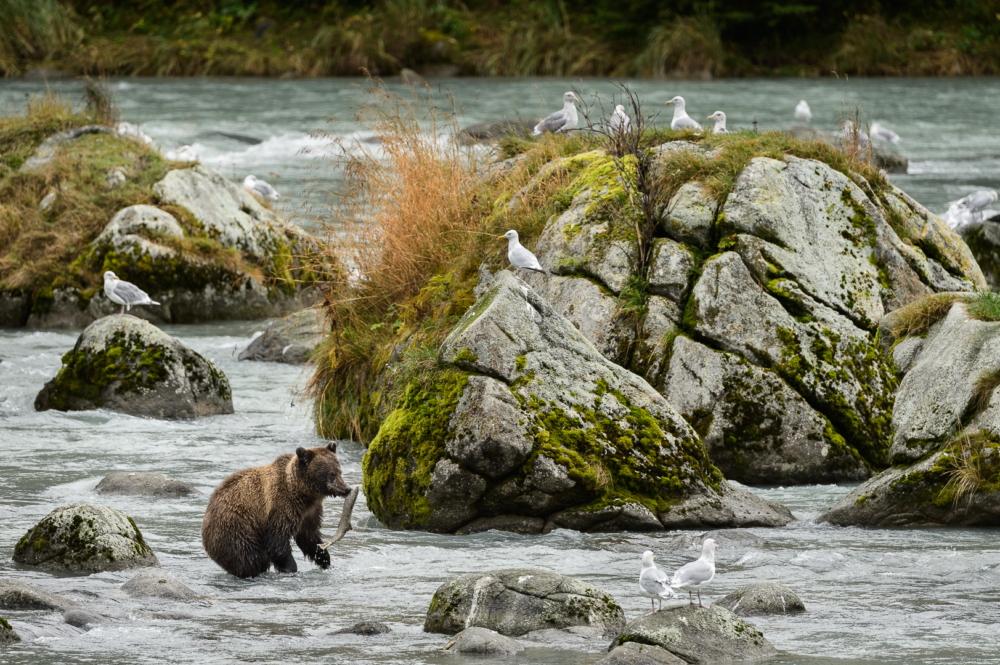
It is in southeast Alaska in particular where I have focused my attention. It started out with a topical interest in one of the largest congregations of bald eagles in the world.
Here are a few sample pages from my portfolio
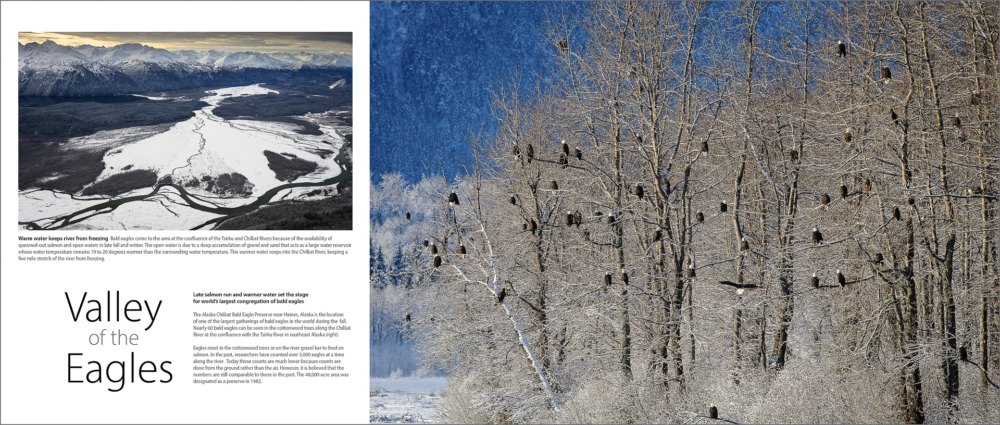
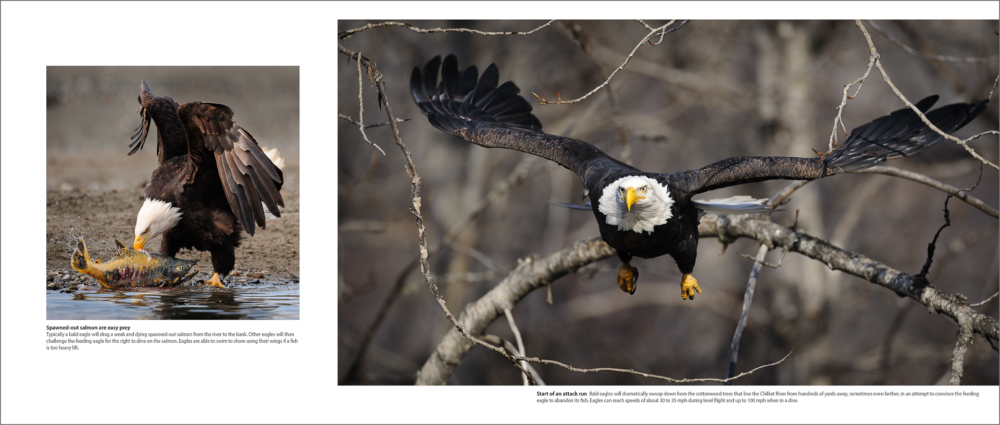
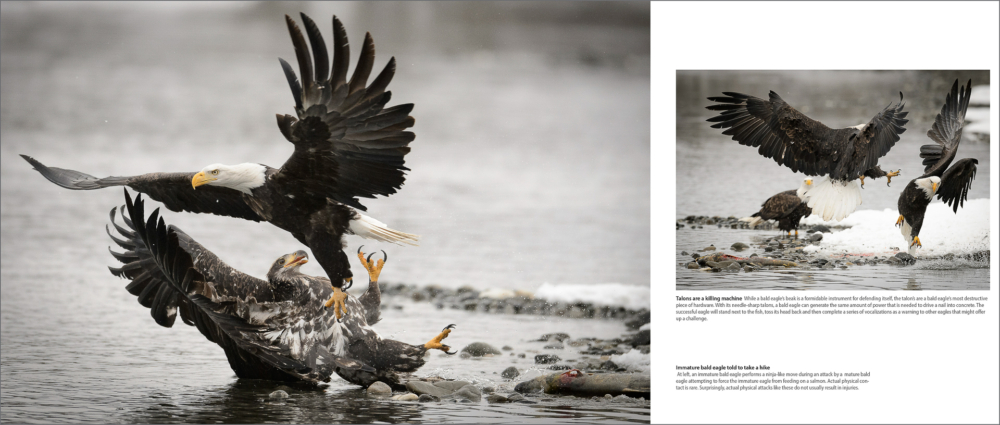
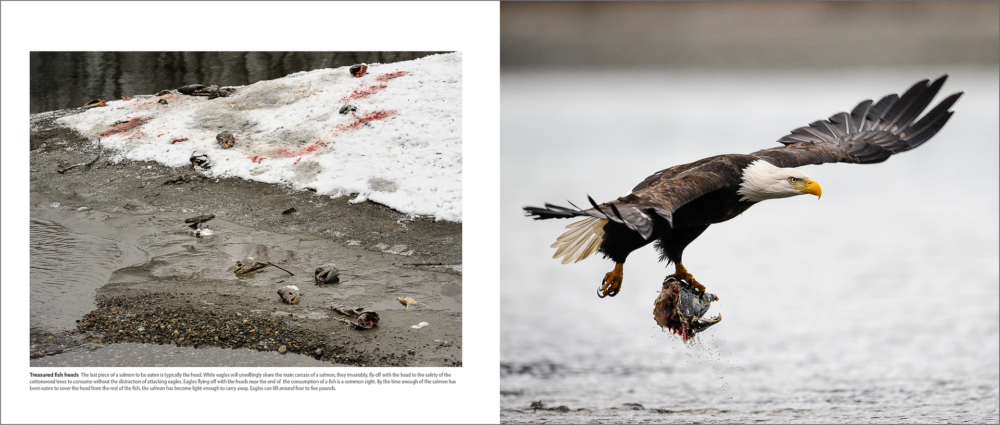
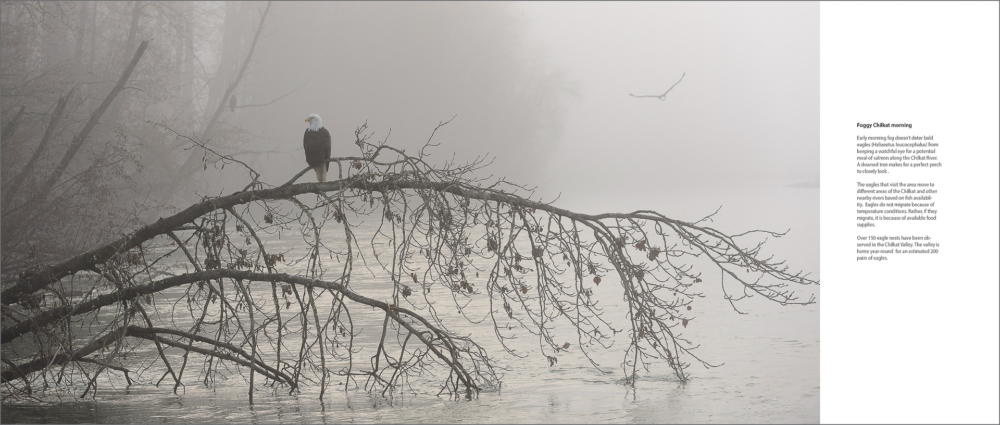
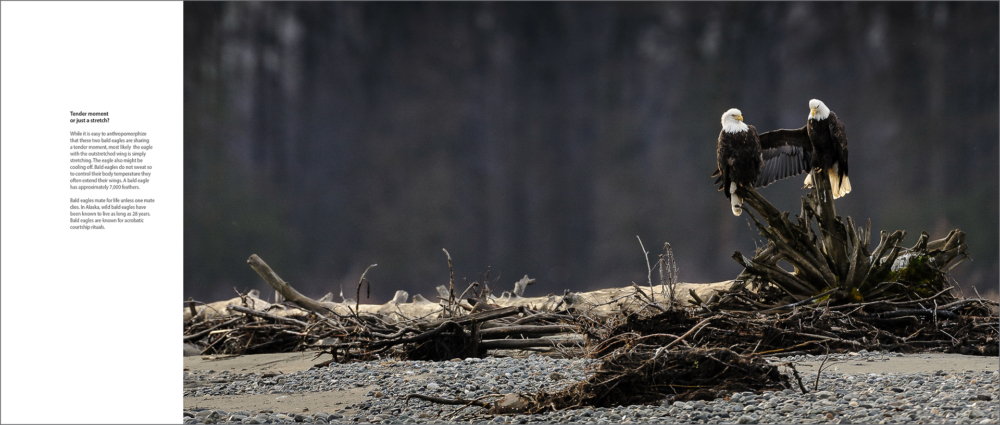
This led to self-assigned work of environmental issues facing the Chilkat and Chilkoot River watersheds. Including stories on wild-stock spawning enhancement, youth citizen science projects, and bear DNA research.
Here’s is a closer look at of one of those stories. This one is on the research of eagle migration. Eagles were captured with snare traps, cataloged, and released with a GPS tracking device.
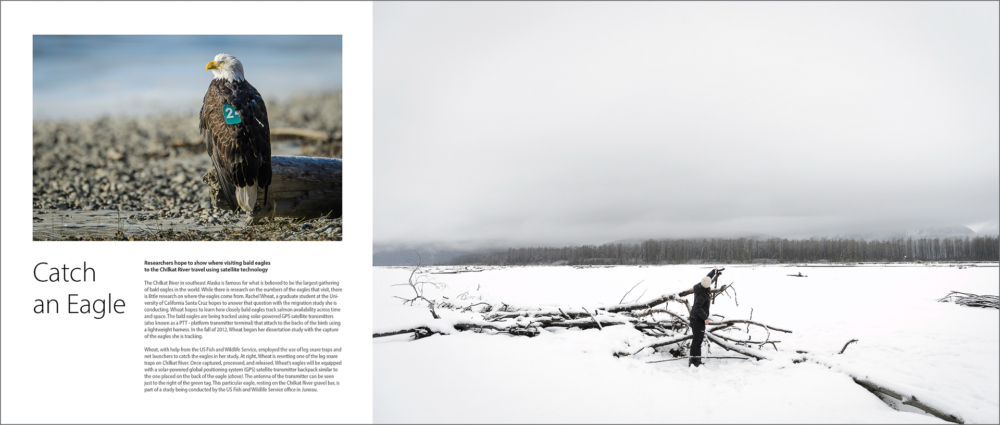
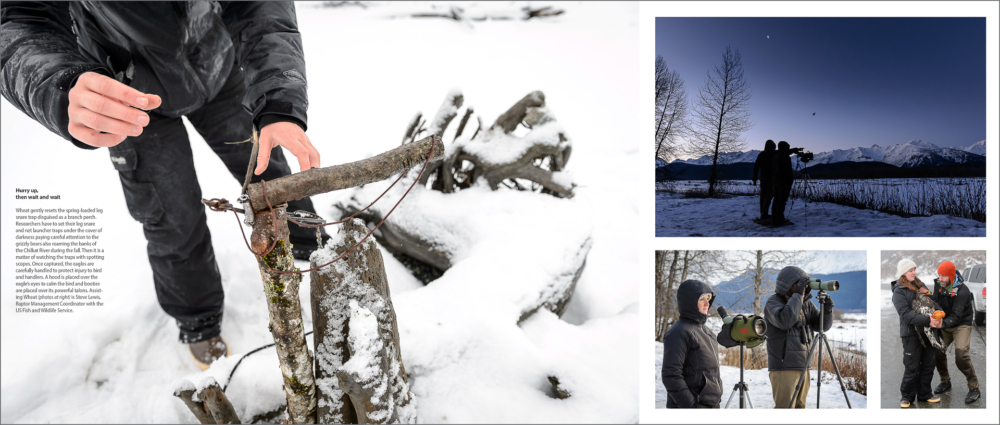
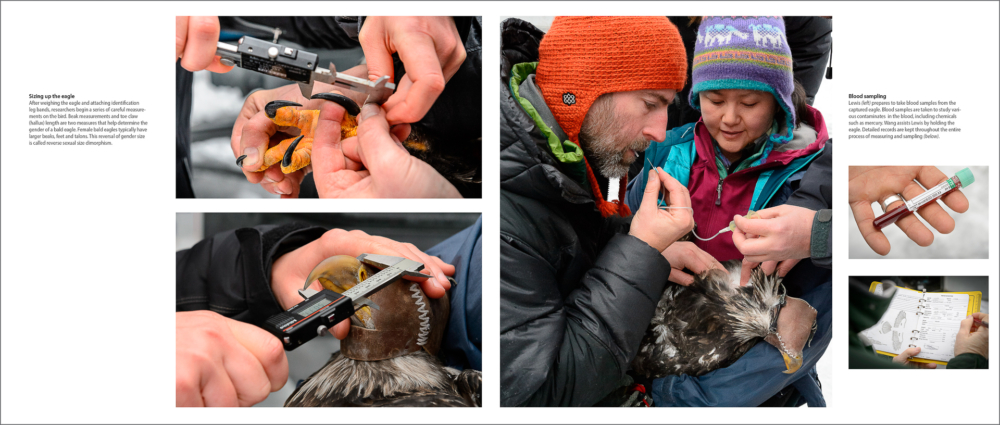
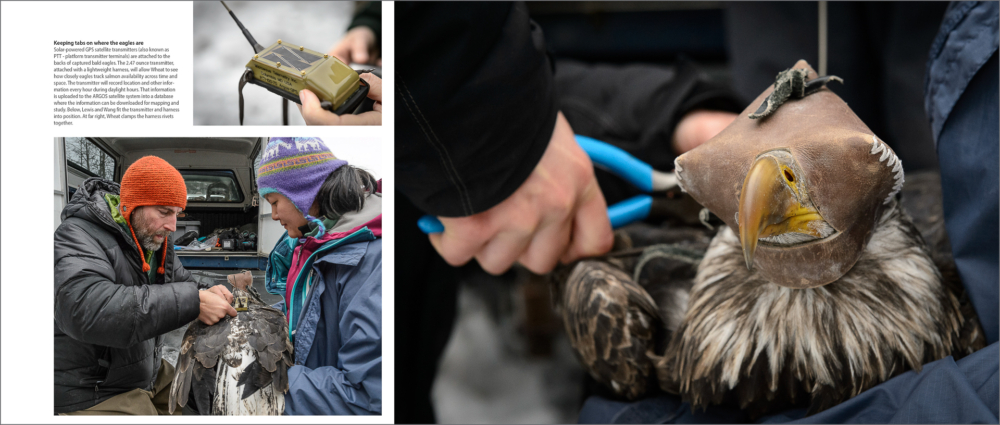
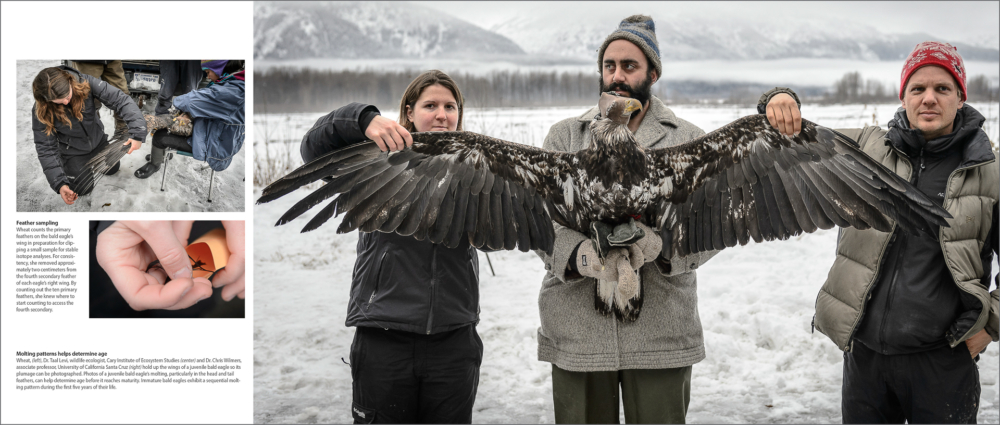
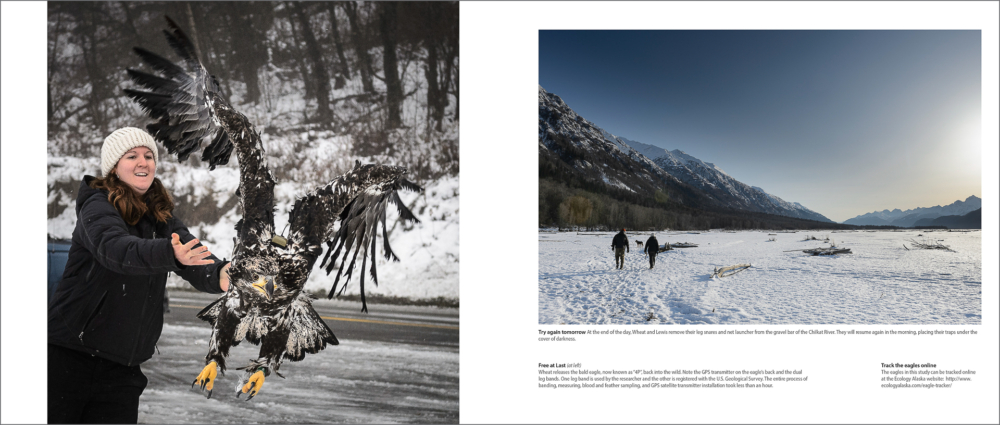
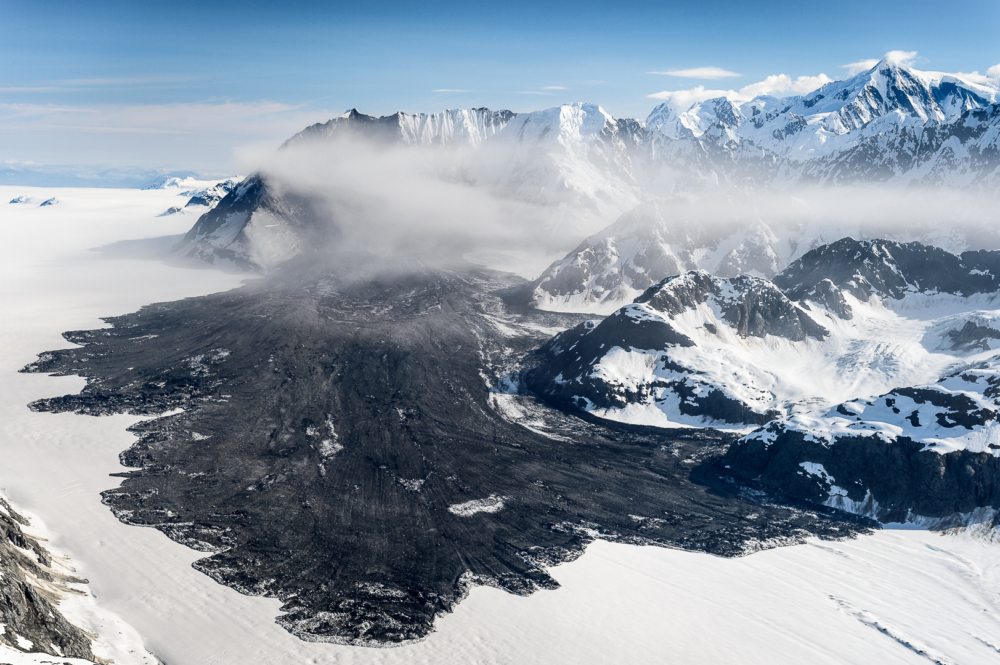
Other examples include examining the effects of climate change, something easily evident in Alaska. In this example, a day-old landslide, which, according to geologists, was caused by warming temperatures. This is an excellent example of climate change in action. The large landslide was the equivalent of 60 million medium SUVs tumbling down that 4,000-foot mountainside in 60 seconds.
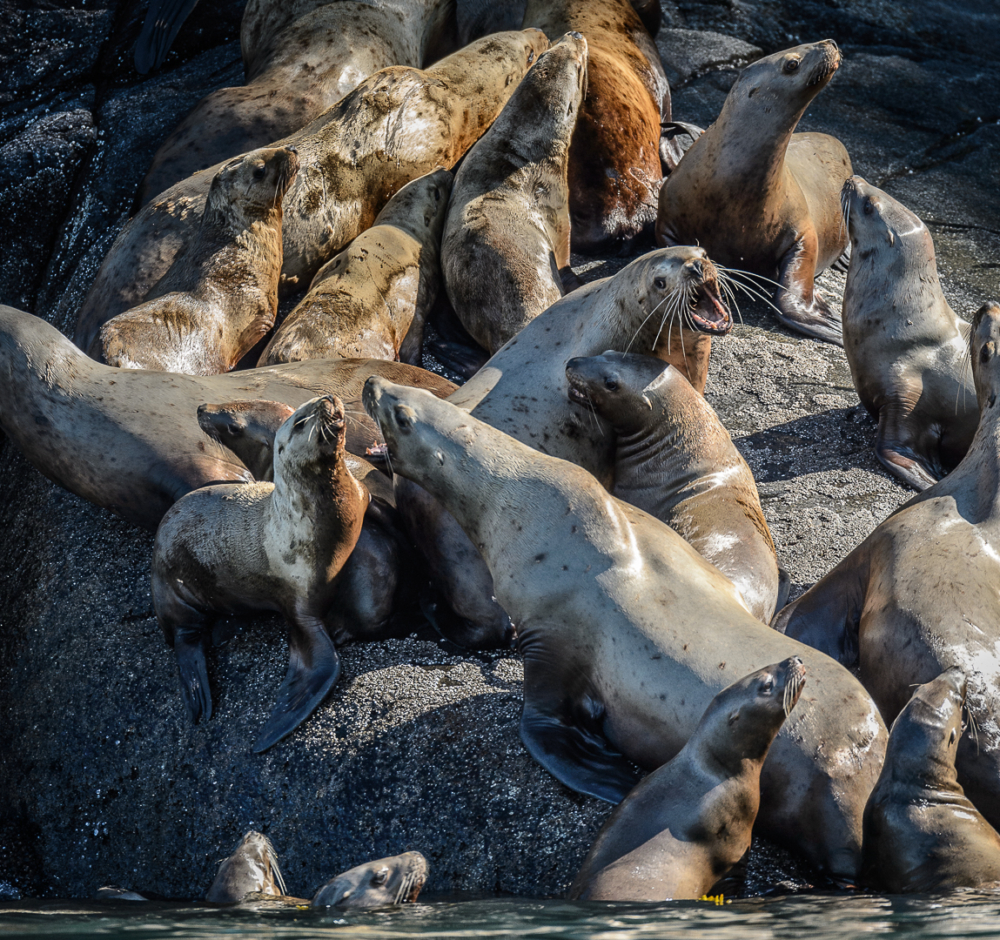
Another example, the environmental impact of a stellar sea lion haul-out from a proposed half-a-billion-dollar, 48-mile highway whose roadbed would be mere feet above this spot. This haul-out is the only one I am aware of in the 90 miles between Juneau and Haines.

Another example, the creation of a “Taum Sauk” like hydroelectric reservoir at a lake high above a critical salmon habitat river. The snow-covered lake on the left side of this image is where the reservoir and dam would be located. This area happens to be in one of the world’s most active earthquake zones. Based on what happened here in Missouri with the similar Taum Sauk reservoir, you can see why some question the idea.
Finally, and most importantly; what are the risks to salmon from the possibility of a large-scale copper-zinc mine that could potentially harm the Chilkat River fishery, threatening the main food source for bald eagles and bears and at the same time threatening a major economic commercial and subsistence fishing resource.
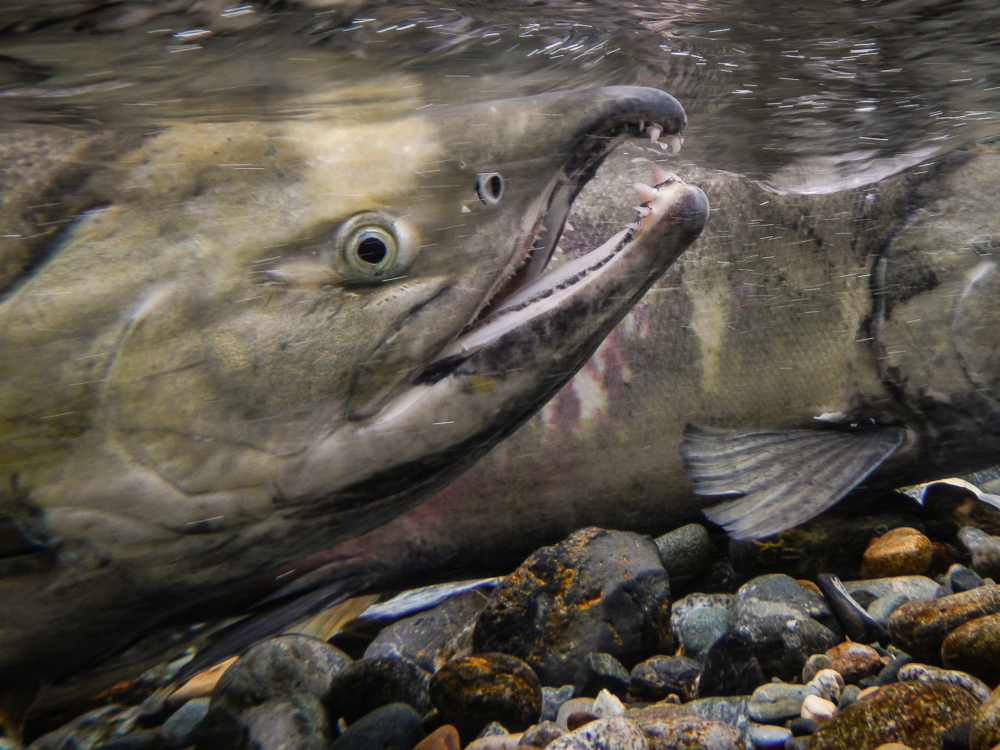
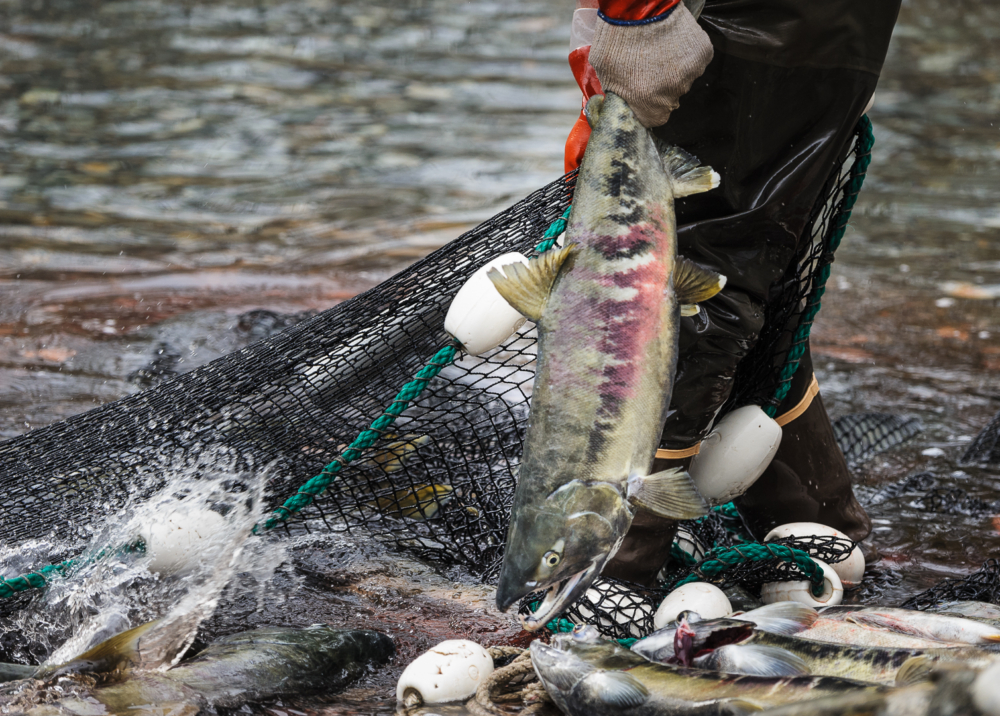
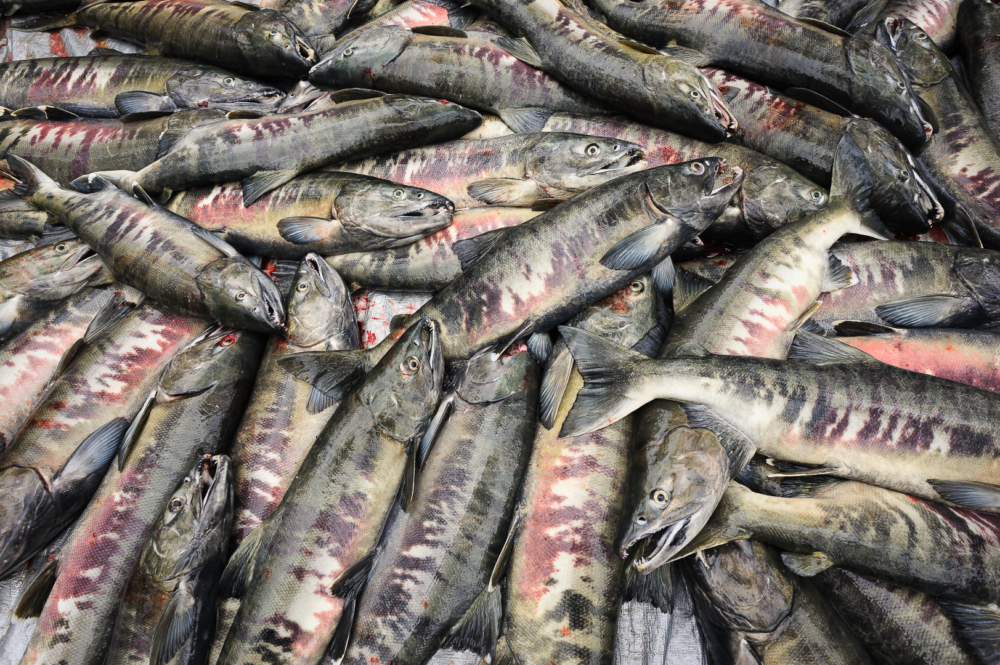

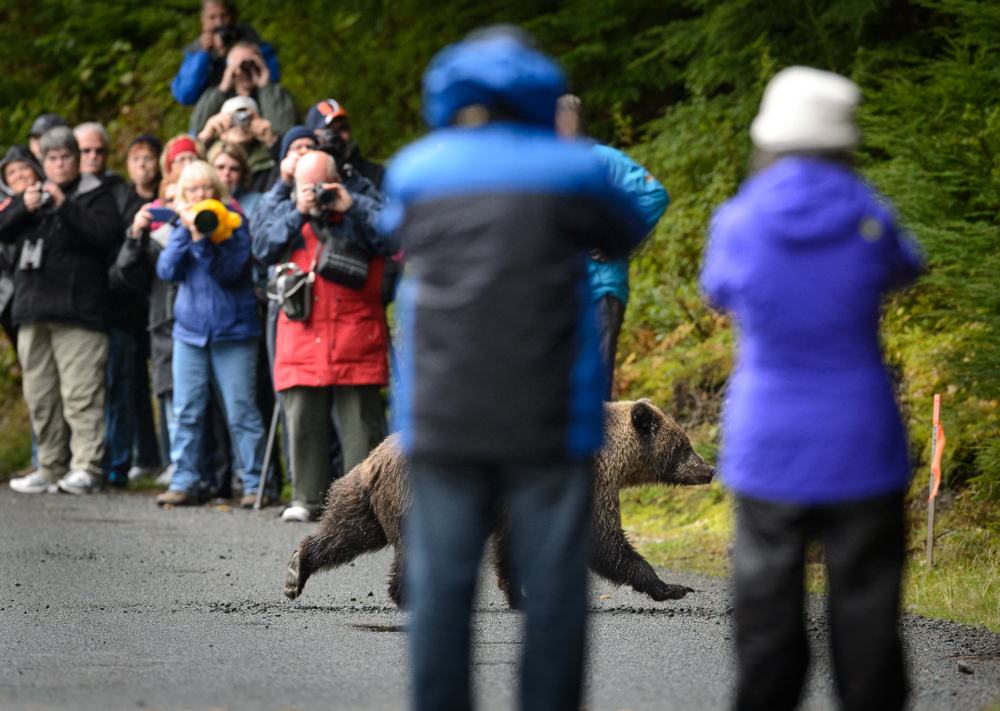
Hopefully, my new focus will inform and inspire just as I hoped my early photography did. The difference between nature photography and conservation photography is that nature photography consists of pretty photos, whereas conservation photography informs, makes people care, and motivates them to take action.
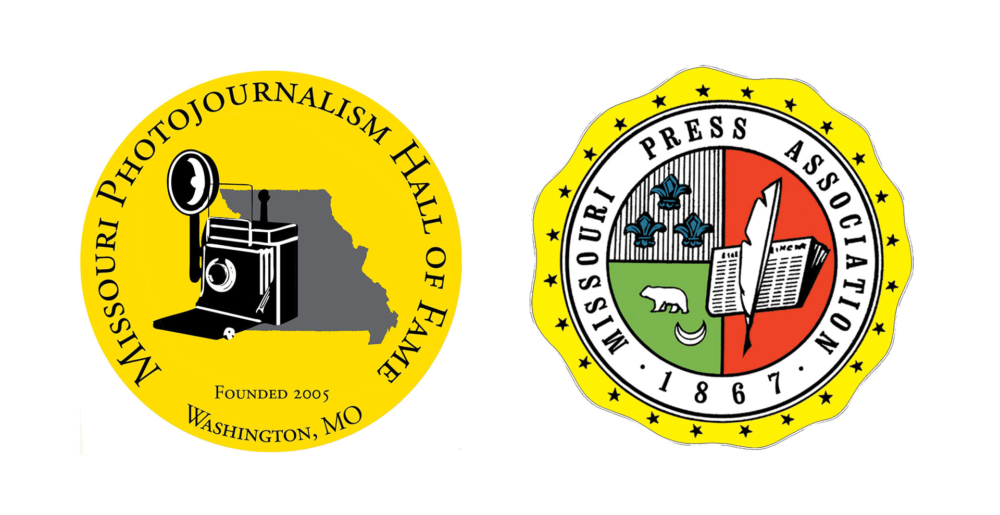
In conclusion, I want to thank the Missouri Photojournalism Hall of Fame along with Rita Reed, Bill Anderson, Bob Linder and Noppadol Paothong for their nomination support. Also thanks to the Missouri Press Association and the Missouri Press Foundation.
I want to thank my family, starting with my cousin, Charles Rice, whose unused basement darkroom started my photography journey. My uncle, Jay Rice, a conservationist, who instilled in me an interest in nature at an early age, and my aunt, Bonnie Rice who through trips to museums, and books, exposed me as a youngster to great photographers.
I also want to thank my parents, Tru and John, for their wisdom and unquestionable support of my pursuits. I wouldn’t be who I am if it wasn’t for their love and compassion, and my sisters Anne Albin and Laura Muench for being good sports as models when I was trying to learn the basics of studio lighting.
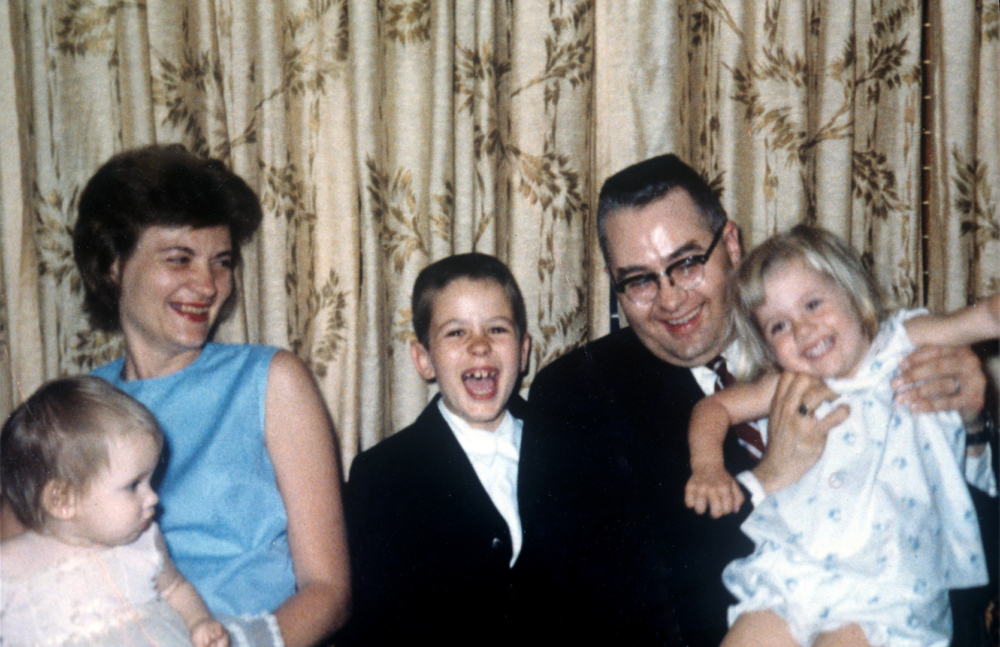
And of course, I especially want to thank my life partner, Carol Shoptaugh, for her love, understanding, unwavering belief, support, and patience.
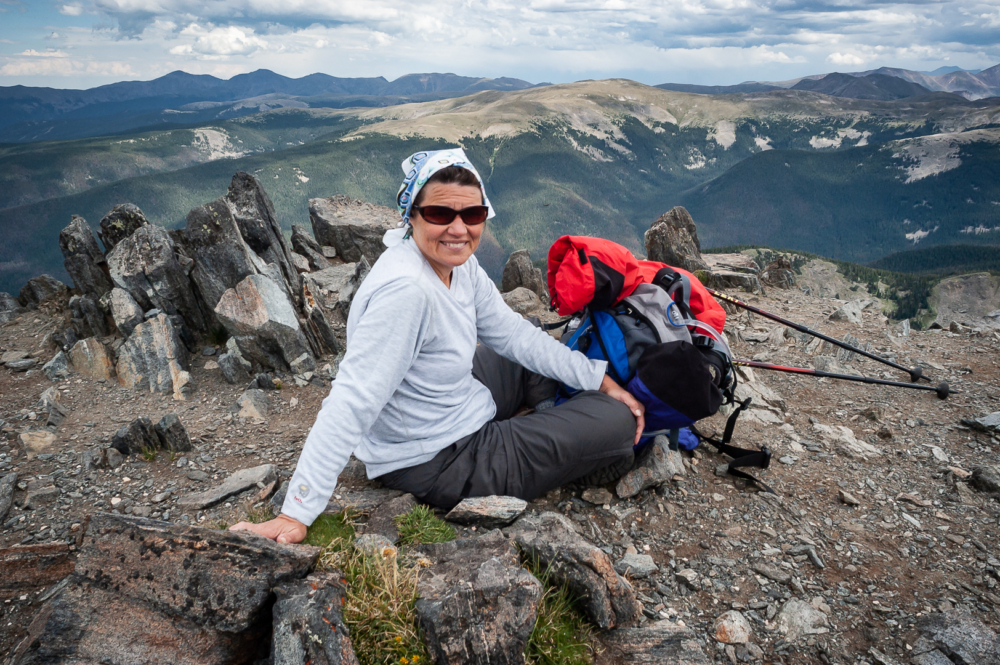
Thank you.
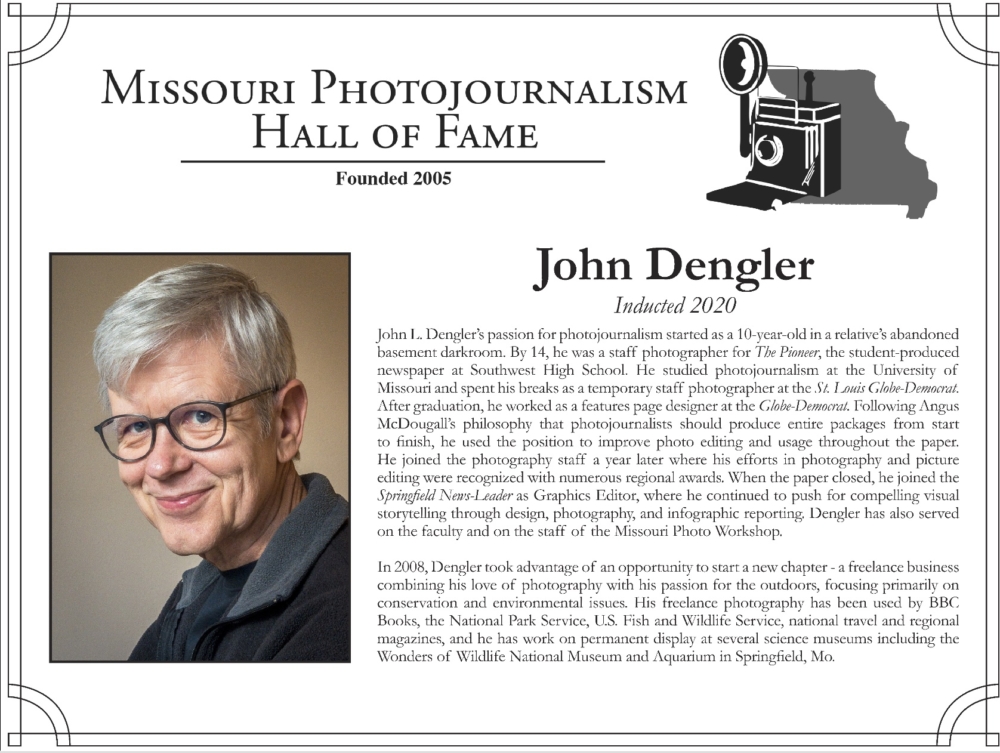
LINKS:
- News-Leader story: Springfield’s John Dengler will be inducted in Missouri Photojournalism Hall of Fame
- News-Leader story: From Sophia Loren to bald eagles: Missouri Hall of Fame photographer looks back at career






